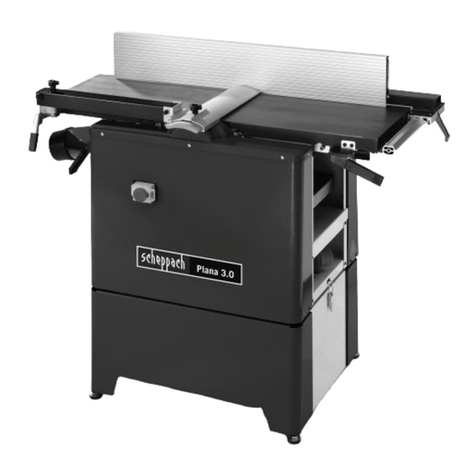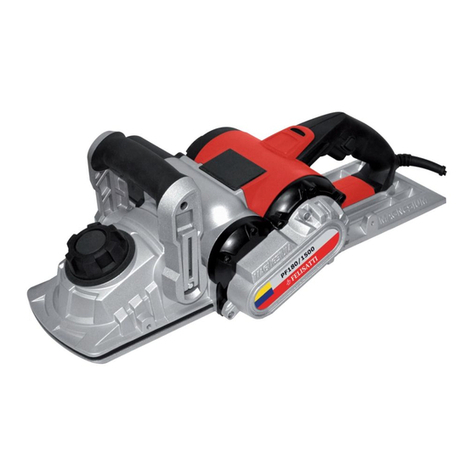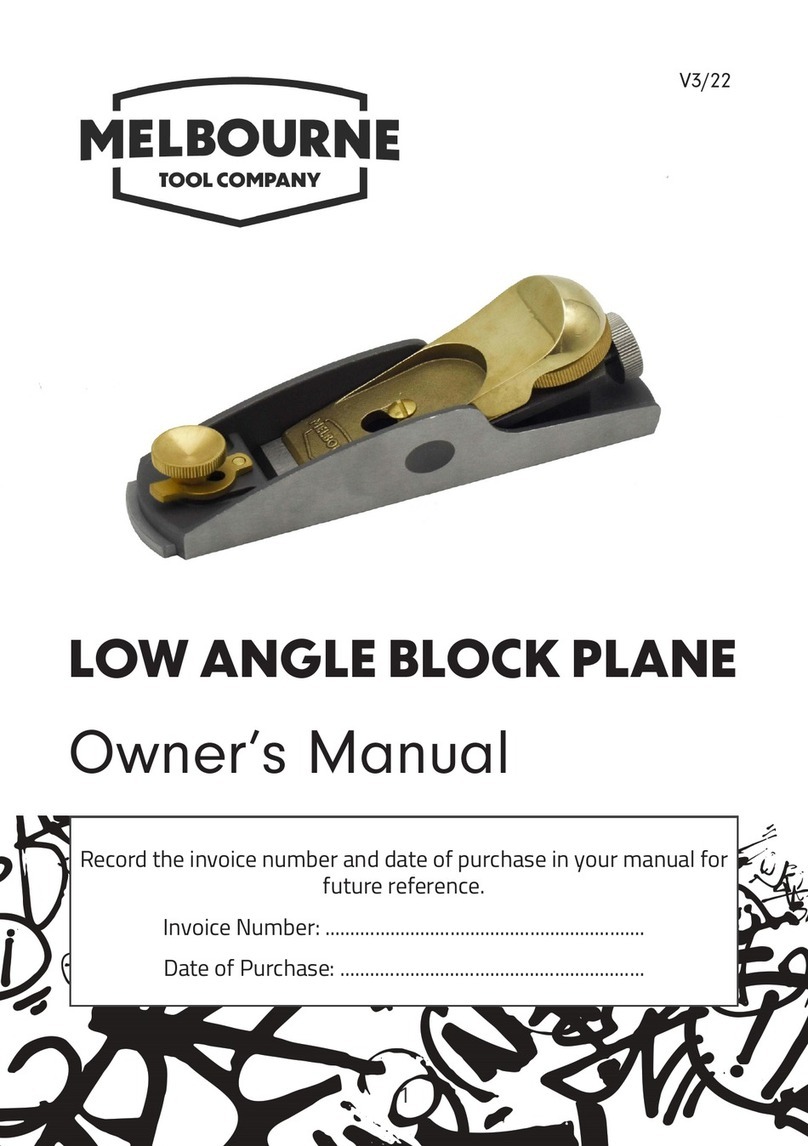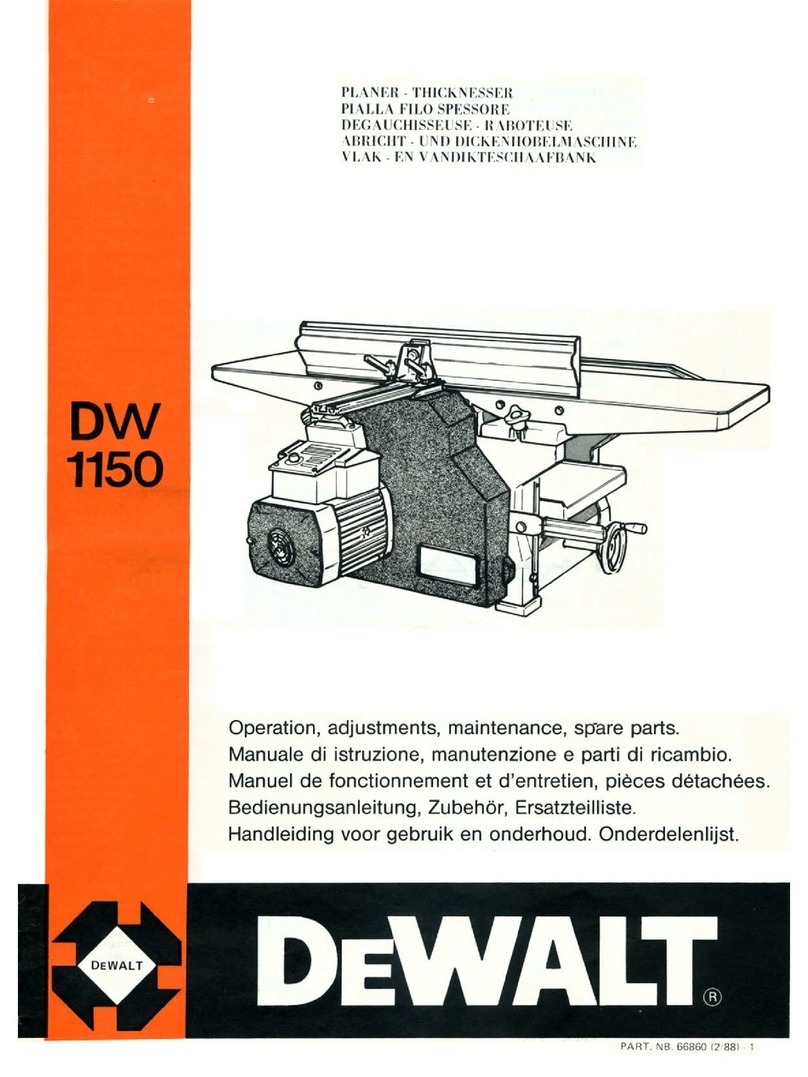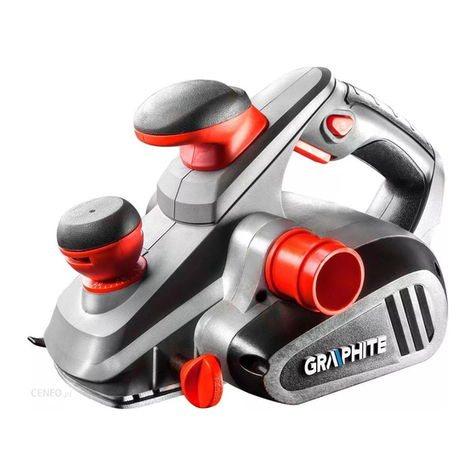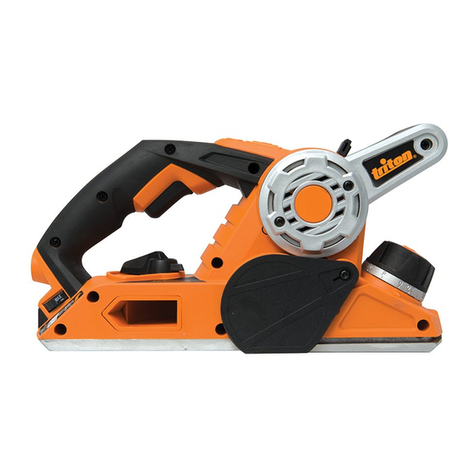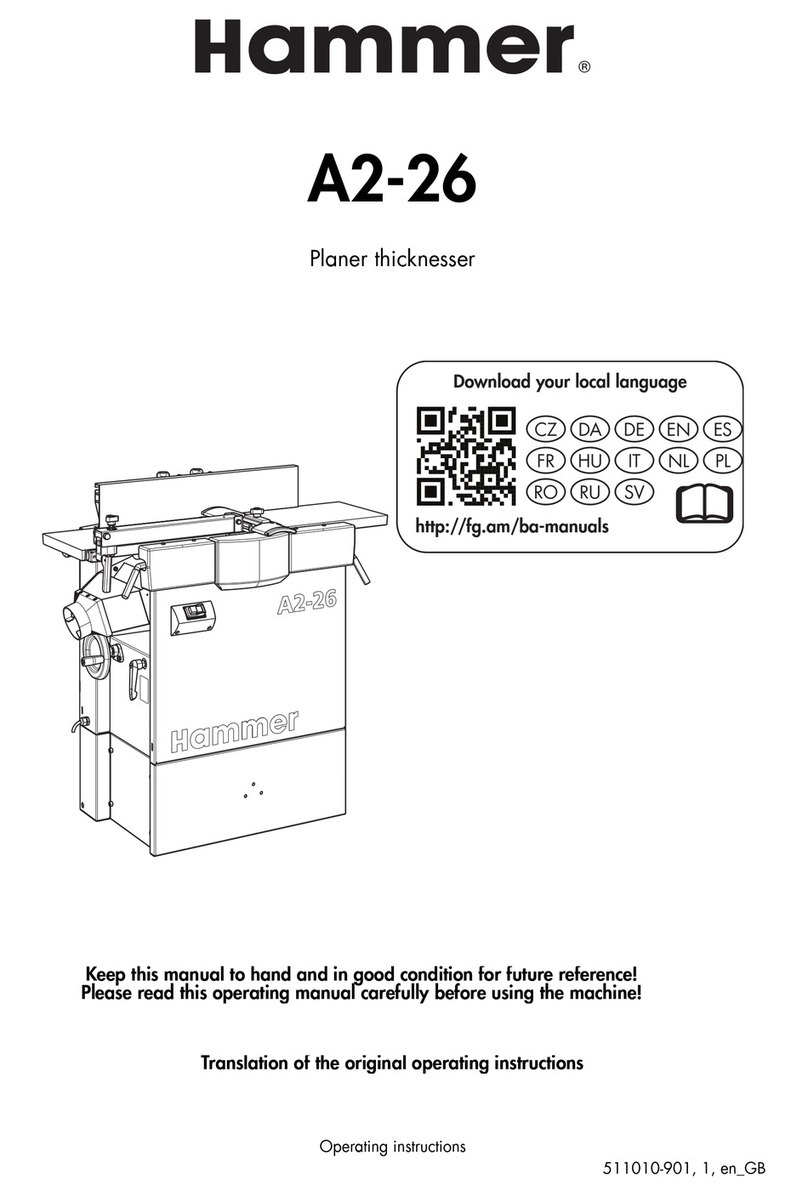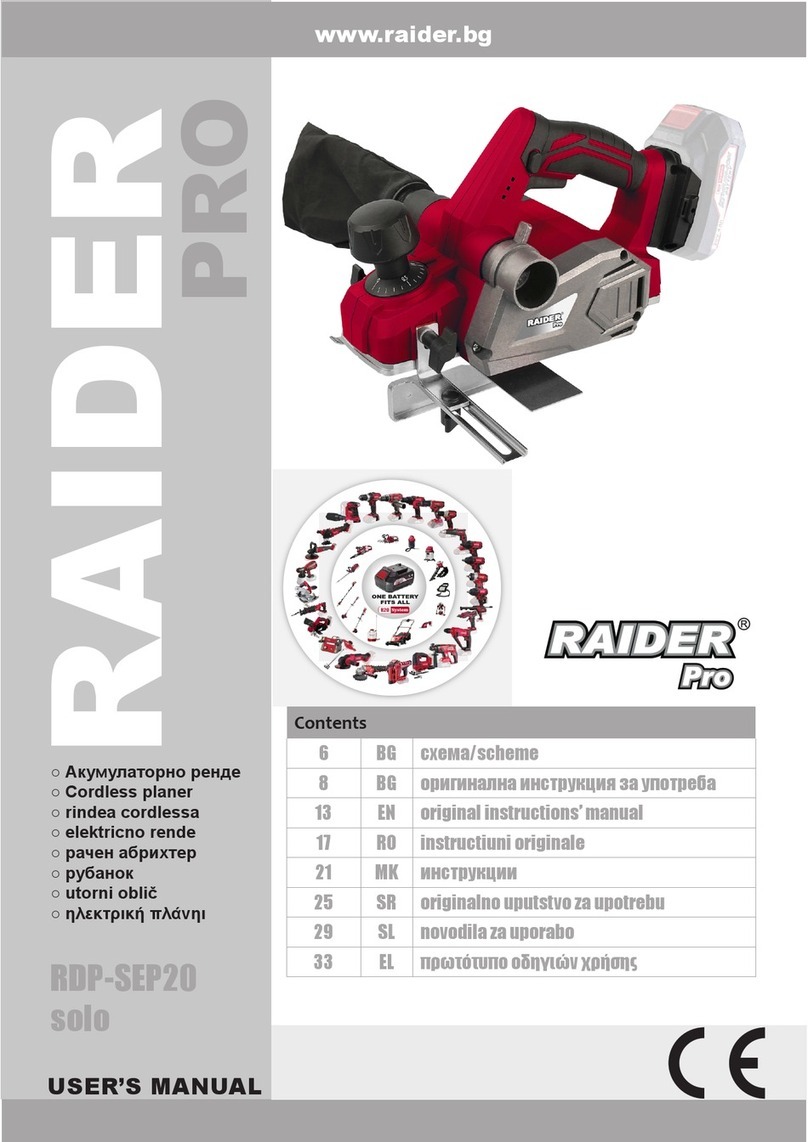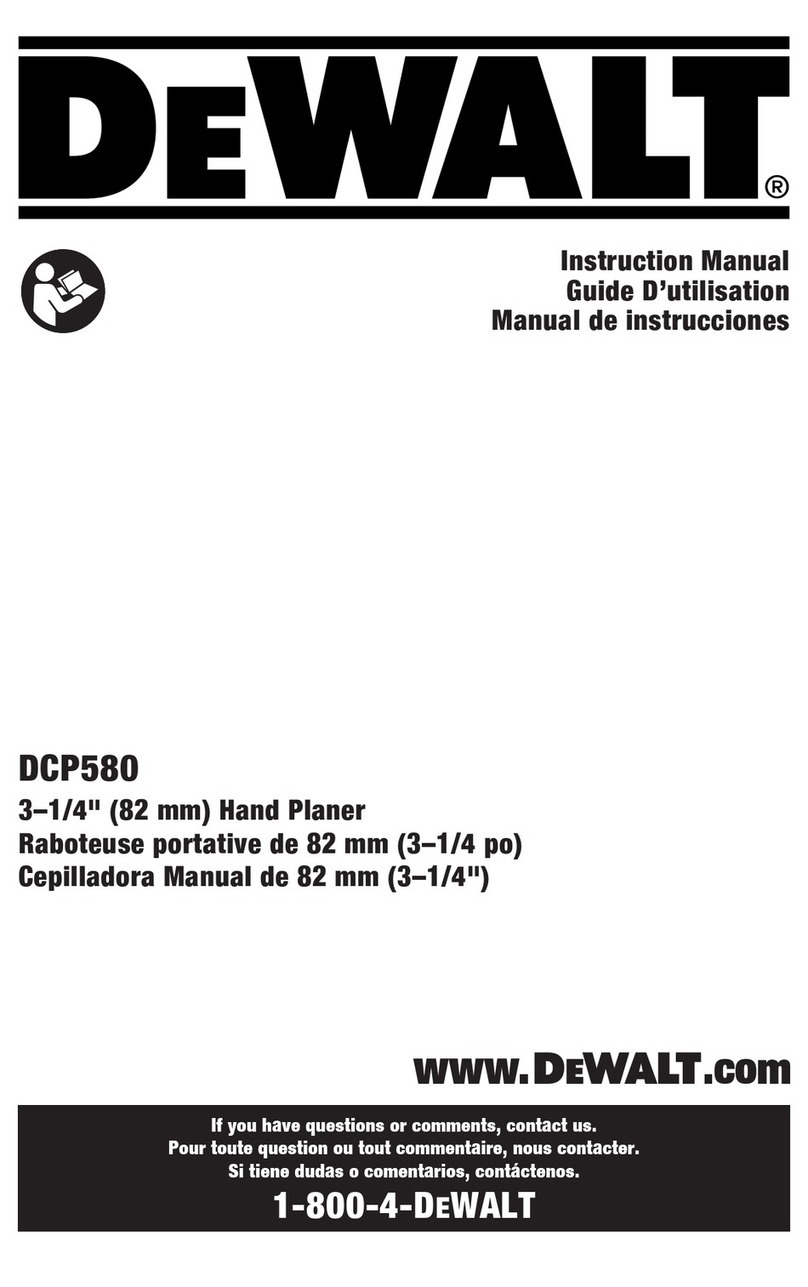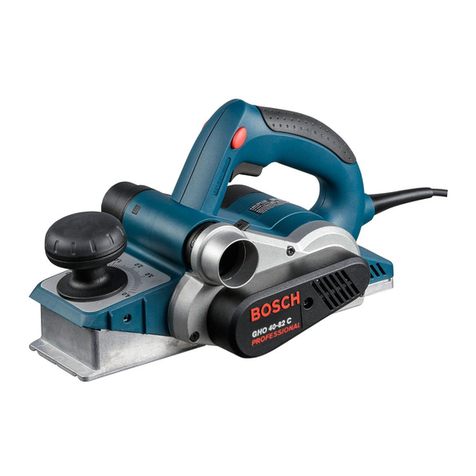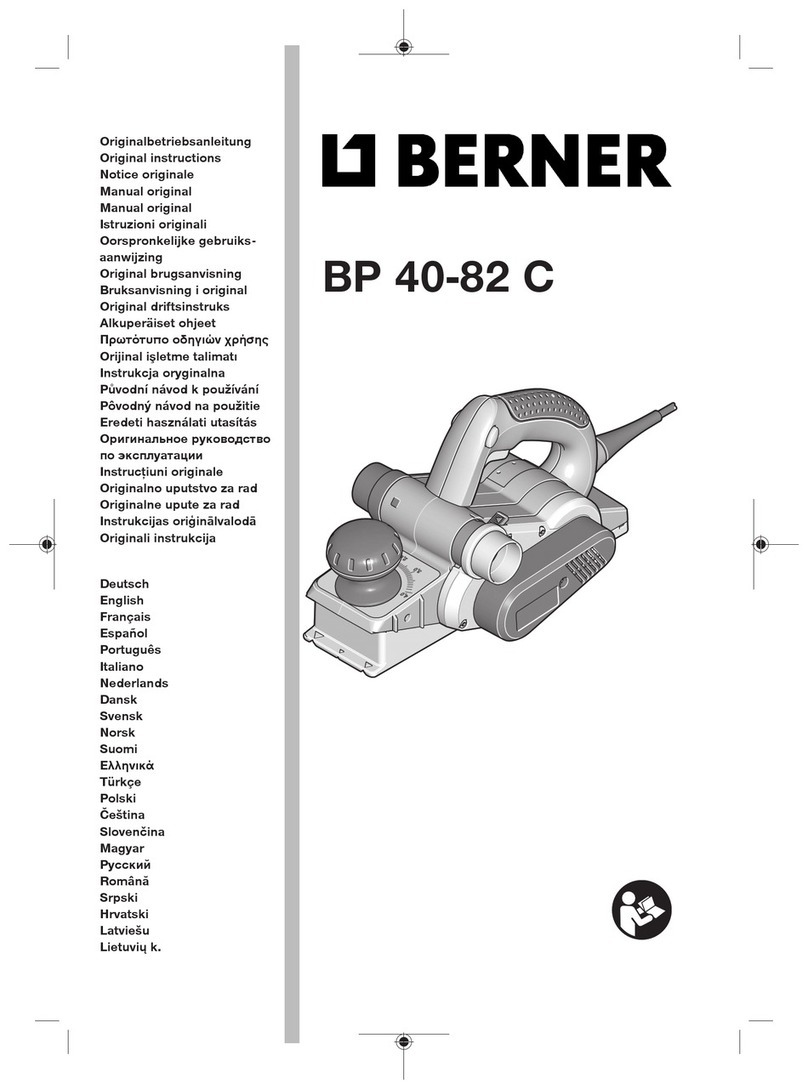
9
OBSŁUGA I KONSERWACJA
Przed przystąpieniem do jakichkolwiek czynności związanych z instalowaniem, regulacją, naprawą
lub obsługą należy wyjąć wtyczkę przewodu zasilającego z gniazdka sieciowego.
ƔStrug najlepiej czyścić za pomocą miękkiej szczotki lub strumienia sprężonego powietrza.
ƔDo czyszczenia struga nie wolno używać jakichkolwiek przedmiotów ściernych.
ƔDo czyszczenia nie wolno stosować wody lub chemicznych środków czyszczących.
ƔCzyścić strug regularnie, a najlepiej po zakończeniu każdej pracy.
ƔStrug i jego szczeliny wentylacyjne należy zawsze utrzymywać w czystości.
ƔStrug zawsze należy przechowywać w miejscu suchym, niedostępnym dla dzieci.
ƔW przypadku występowania nadmiernego iskrzenia na komutatorze zlecić sprawdzenie stanu szczotek
węglowych silnika osobie wykwalikowanej.
ƔPo zakończeniu pracy należy opróżnić worek na pył, umyć w ciepłej wodzie z mydłem i starannie
wysuszyć.
WYMIANA NOŻY STRUGA
Należy stosować wyłącznie głowice tnące zalecane przez producenta, które obejmują noże,
bęben, elementy mocowania noży, odpowiednie śruby i wrzeciono. Zawsze dokonuje się wymiany
jednocześnie obu noży.
Nowe noże muszą być takiej samej wielkości i mieć taką samą masę jak noże stare. W przeciwnym
wypadku głowica może zacząć drgać, obróbka będzie przebiegać niewłaściwie i może dojść do
uszkodzenia noży lub głowicy struga. Zbyt duży posuw znacznie redukuje wydajność i jakość pracy
oraz trwałość noży. Należy używać tylko ostrych noży. Chronić strug przed stępieniem noży. Noże
należy wymieniać jak tylko zaistnieje taka potrzeba.
ƔPoluzować śruby mocujące (15) nóż (16) za pomocą klucza ( w wyposażeniu) (rys. K).
ƔObrócić głowicę (17) o pół obrotu i powtórzyć ten zabieg dla drugiego noża.
ƔWcisnąć osłonę uchylną (21) i wysunąć noże.
ƔWymienić noże na nowe i zamontować w kolejności odwrotnej do ich demontażu.
ƔUpewnić się czy noże są umieszczone symetrycznie w prowadnicy głowicy (17).
ƔDokręcić śruby mocujące (15) równomiernie i na przemian.
Dzięki dołączonemu w wyposażeniu przyrządowi do ostrzenia noży można samemu naostrzyć tępe noże.
ƔUmieścić oba noże (16) w przyrządzie do ostrzenia noży wsuwając je do oporu i dokręcić śruby mocujące
(rys. M).
ƔPrzesuwać przyrząd do ostrzenia noży pod odpowiednim kątem z niewielkim dociskiem noży do tarczy
ściernej.
ƔPo naostrzeniu zamontować noże do struga.
Przyrząd do ostrzenia noży po skręceniu obu części służy jako przyrząd pomiarowy do osadzenia na
właściwą głębokość noży w głowicy struga.
Po zamontowaniu noży w głowicy należy pamiętać, aby wkręty i śruby były pewnie dokręcone. Ich
nie dokręcenie może być powodem uszkodzenia struga lub ciała użytkownika. Ostrza noży muszą
być równoległe do powierzchni walca głowicy. W przeciwnym razie obrabiana powierzchnia nie
będzie płaska i równa. Należy stosować wyłącznie głowicę, która jest dostarczana łącznie z wyrobem
lub dostarczoną przez wytwórcę albo jego autoryzowanego dystrybutora.
WYMIANA PASKA NAPĘDOWEGO
Jeślipasek napędowy jestzużytyto strugnie pracujewłaściwie. Koniecznajest wymiana paskanapędowego.
ƔOdkręcić wkręty mocujące i zdjąć osłonę paska napędowego (4).
ƔZdjąć pasek napędowy zsuwając go z kół poprzez obracanie kół ręką.
ƔMontaż nowego paska napędowego należy przeprowadzić w następujący sposób:
–założyć pasek napędowy na mniejsze koło.
–obracając kołami nasunąć pasek napędowy na większe koło.
